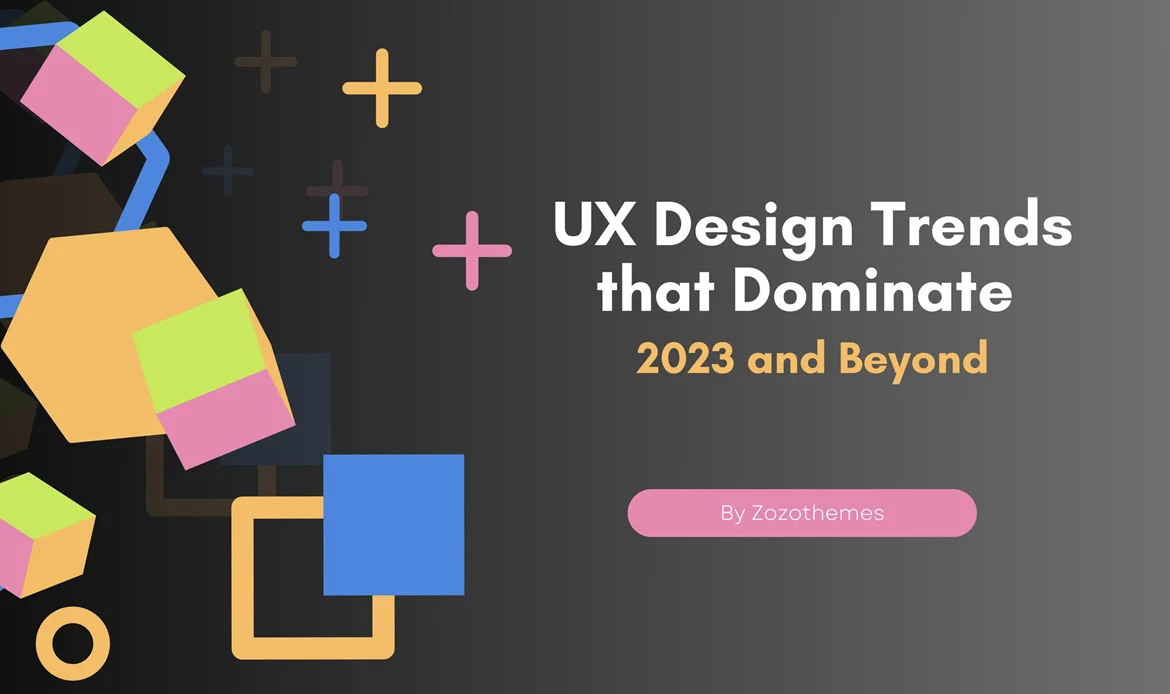Welcome to our insightful journey into the ever-evolving realm of user experience design. In this blog, we delve into the exciting world of “Top UX Design Trends that Dominate 2025 and Beyond.”
As the digital landscape continues to evolve, user expectations and technological advancements drive the need for innovative and user-centric design approaches. Join us as we explore the cutting-edge trends that will shape the way we interact with technology and elevate user experiences in the years to come.
Whether you’re a seasoned UX professional or simply curious about the future of design, this exploration promises to inspire, inform, and spark your creativity. Let’s embark on this captivating journey together!
Emerging UX Design Trends Shaping Digital Experiences in 2025
1. AI-Powered Personalization
AI-Powered Personalization is a UX design trend where Artificial Intelligence (AI) is used to create highly personalized user experiences. In 2025, this trend is expected to become even more advanced. AI algorithms will analyze user data, such as behavior and preferences, to provide hyper-personalized content, product recommendations, or services. This means that AI will predict what users want, making interactions more efficient and enjoyable for each individual. For example, AI might suggest relevant articles, products, or content before users even express their preferences, enhancing the overall user experience.2. Immersive Experiences: VR and AR
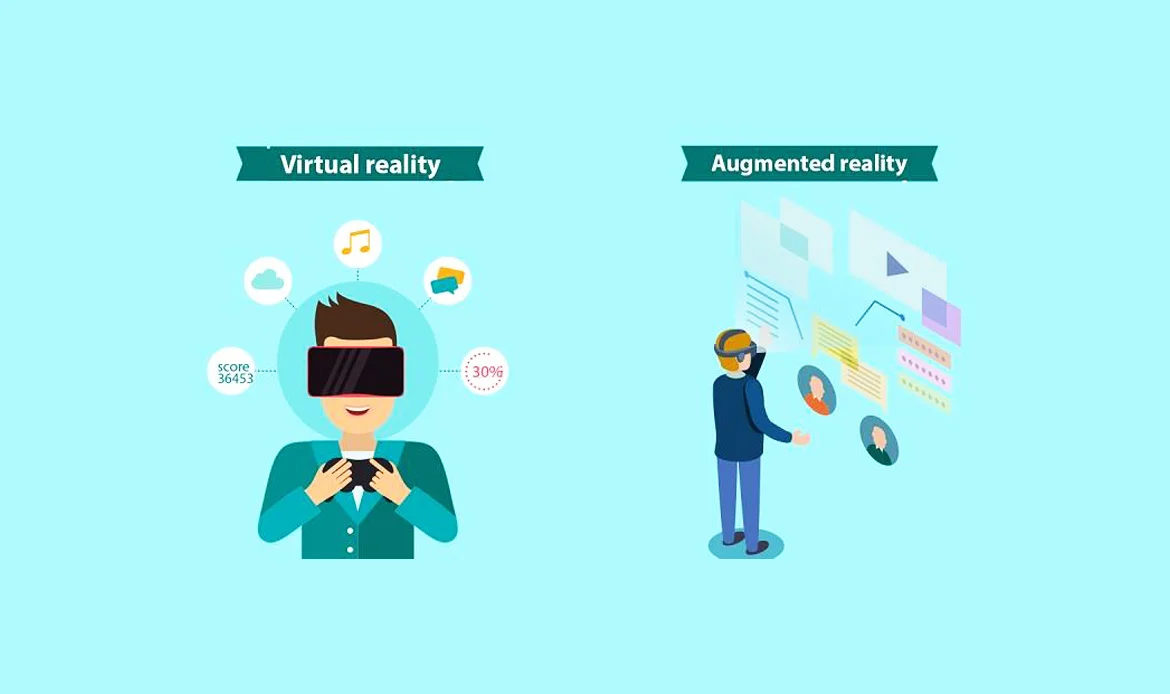 In the context of UX design, the trend is that designers are increasingly using VR and AR to create more immersive and interactive experiences for users. Here’s a breakdown:
In the context of UX design, the trend is that designers are increasingly using VR and AR to create more immersive and interactive experiences for users. Here’s a breakdown:
Seamless Digital-Physical Interfaces:
Designers are working to make the transition between the digital and physical worlds seamless. In AR, this might involve placing virtual objects in a real environment so that they look natural and integrate well. In VR, it means creating digital environments that feel real and responsive to user actions.Captivating Users:
VR and AR have the potential to captivate users in ways that traditional interfaces cannot. For example, in VR gaming, users feel like they’re inside the game world, which makes the experience much more engaging.Applications:
Designers are exploring various applications for VR and AR beyond gaming. This could include virtual shopping experiences where users can “try on” clothes or accessories using AR, or it could involve virtual training simulations for complex tasks. Overall, the goal is to use VR and AR to enhance user experiences by making them more immersive, interactive, and enjoyable. As these technologies become more accessible and sophisticated, they will play an increasingly significant role in shaping the future of UX design.3. Voice User Interface (VUI) and Conversational UX
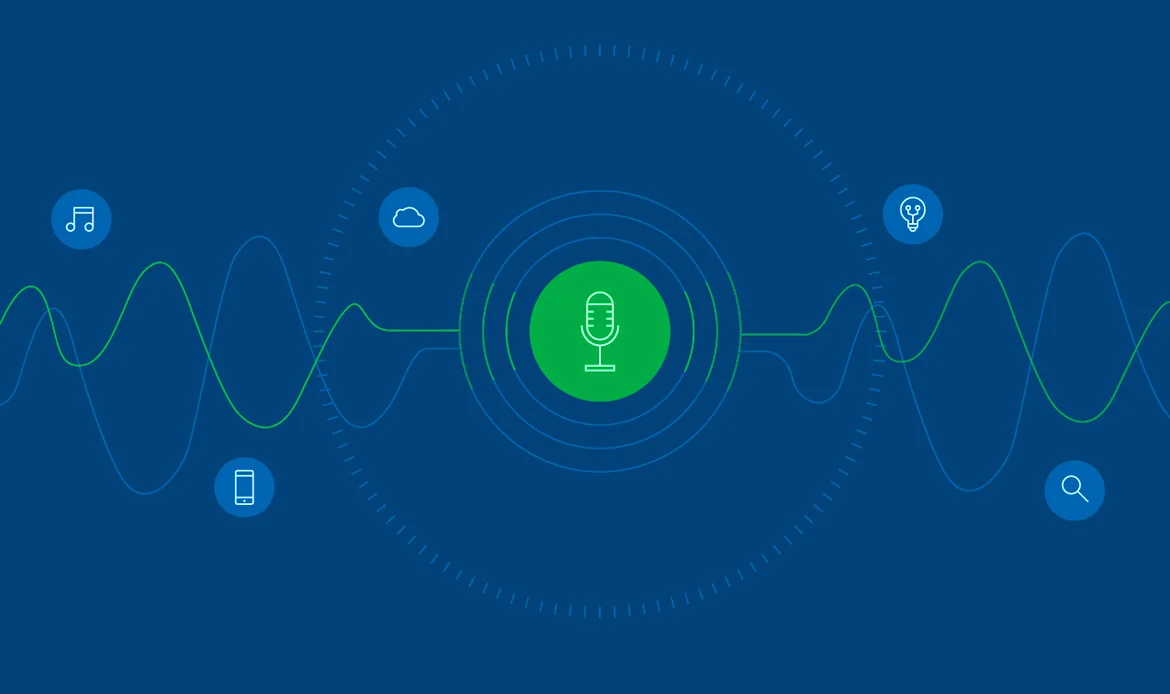 Voice User Interface (VUI) and Conversational UX involve designing interfaces that users can interact with using voice commands. This trend is gaining prominence due to the popularity of voice-activated devices and virtual assistants. In 2025, VUI and conversational UX will be a major focus.
Designers will work on making interactions sound natural and conversational, ensuring that users can easily navigate and achieve tasks using voice commands. This trend also extends to chatbots and AI-powered customer support, which will become more sophisticated in their ability to engage in natural and helpful conversations with users. Essentially, it’s about making voice interactions with technology as seamless and user-friendly as possible.
Voice User Interface (VUI) and Conversational UX involve designing interfaces that users can interact with using voice commands. This trend is gaining prominence due to the popularity of voice-activated devices and virtual assistants. In 2025, VUI and conversational UX will be a major focus.
Designers will work on making interactions sound natural and conversational, ensuring that users can easily navigate and achieve tasks using voice commands. This trend also extends to chatbots and AI-powered customer support, which will become more sophisticated in their ability to engage in natural and helpful conversations with users. Essentially, it’s about making voice interactions with technology as seamless and user-friendly as possible.
4. Sustainability and Eco-Friendly UX Design
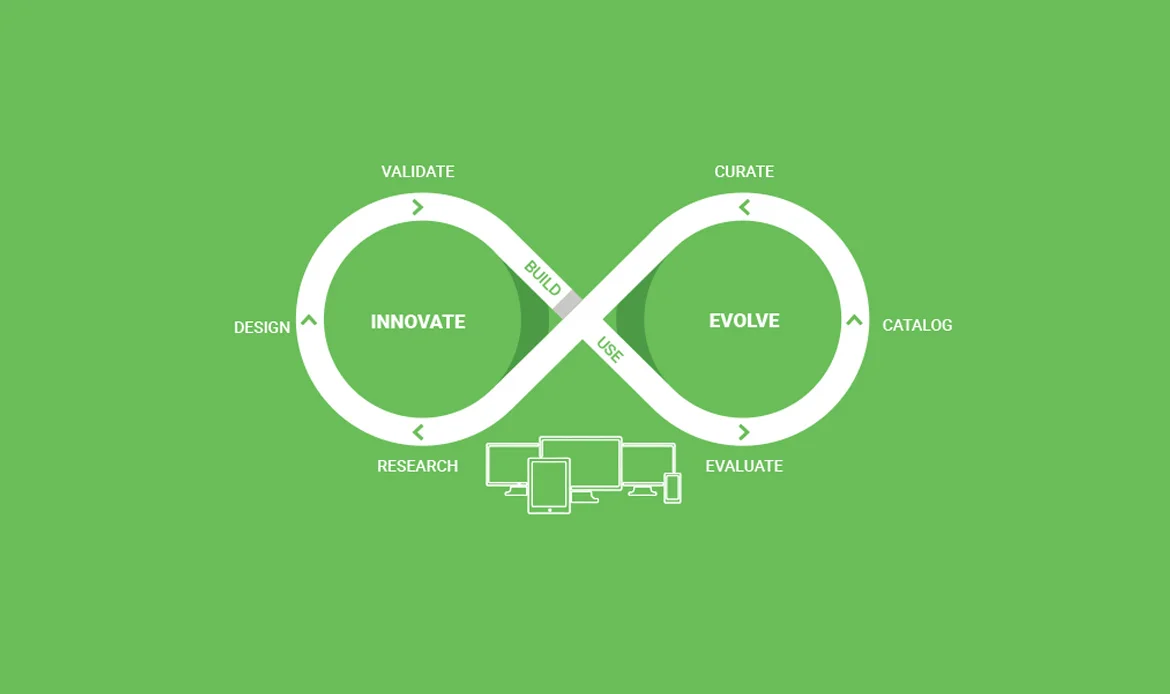 Sustainability and Eco-Friendly UX Design” is a trend in UX design that emphasizes environmentally responsible practices in the creation of digital interfaces. This trend is driven by increasing environmental awareness and concerns about the impact of technology on the planet.
Sustainability and Eco-Friendly UX Design” is a trend in UX design that emphasizes environmentally responsible practices in the creation of digital interfaces. This trend is driven by increasing environmental awareness and concerns about the impact of technology on the planet.
Environmental Concerns:
With growing awareness of environmental issues, UX designers will integrate sustainable design principles into their work.Eco-Friendly Choices:
Designers will make eco-friendly choices when it comes to materials, energy consumption, and resource usage in the development of digital products. This might include using sustainable materials, optimizing code for energy efficiency, and reducing resource-intensive design elements.User Appreciation:
Users will appreciate interfaces that align with sustainability and environmental awareness. This could involve energy-efficient applications that consume fewer resources, or e-commerce platforms that highlight eco-conscious products and practices. In summary, Sustainability and Eco-Friendly UX Design is about designing digital experiences that not only meet user needs but also contribute to a more sustainable and environmentally conscious future. It’s a response to the growing global concern for the environment and the desire to minimize the ecological footprint of digital technology.5. Minimalism and Microinteractions
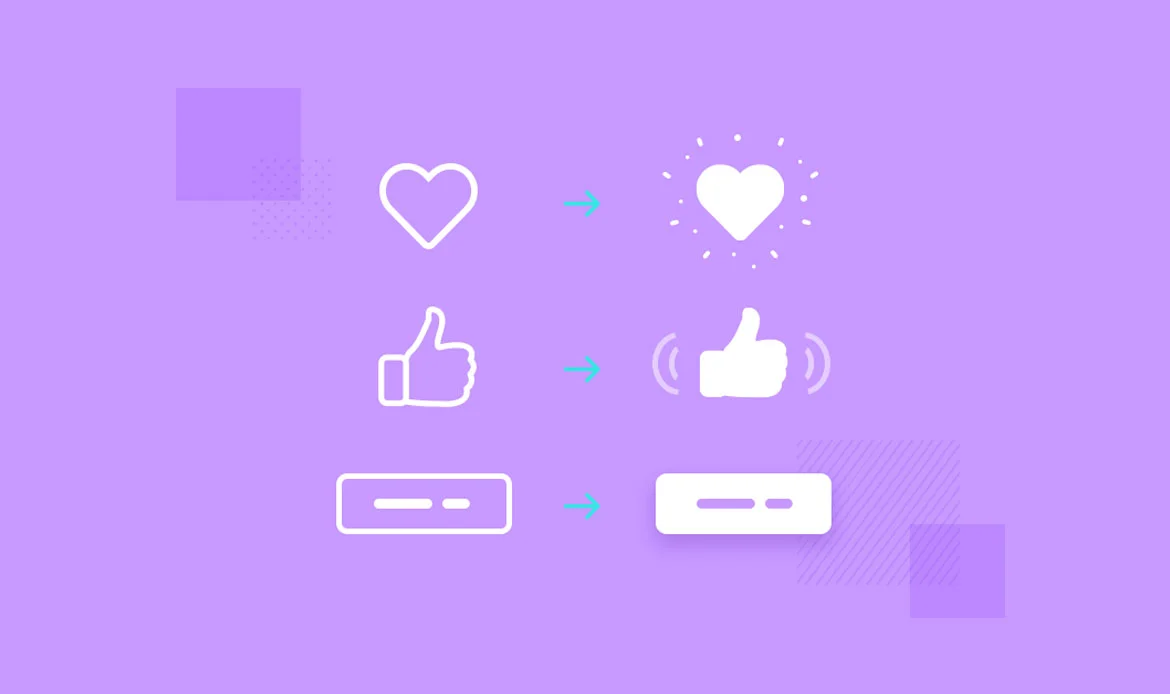 Minimalism and Microinteractions” is a UX design trend that combines minimalist design principles with the use of subtle animations and feedback loops, known as microinteractions.
Minimalism and Microinteractions” is a UX design trend that combines minimalist design principles with the use of subtle animations and feedback loops, known as microinteractions.
Minimalism:
In 2025, UX design will emphasize simplicity and clarity. Minimalist design principles involve using a clean and uncluttered approach in interface design. This means reducing unnecessary elements and focusing on essential features to create cleaner and more intuitive user interfaces.Microinteractions:
Microinteractions are small, subtle animations or feedback mechanisms that provide users with information or engage them in a brief, delightful interaction. Examples include a button changing color when hovered over or a notification icon subtly popping up when new content is available.Enhanced User Engagement:
By incorporating microinteractions, designers aim to enhance user engagement and delight. These small design details can make a big difference in the user experience, making interactions more enjoyable and satisfying. In summary, Minimalism and Microinteractions in UX design focus on creating streamlined, easy-to-use interfaces while adding subtle animations and feedback to engage users and enhance their overall satisfaction. It’s a balance of simplicity and user-centric design details.6. The Role of 5G in Shaping UX Design
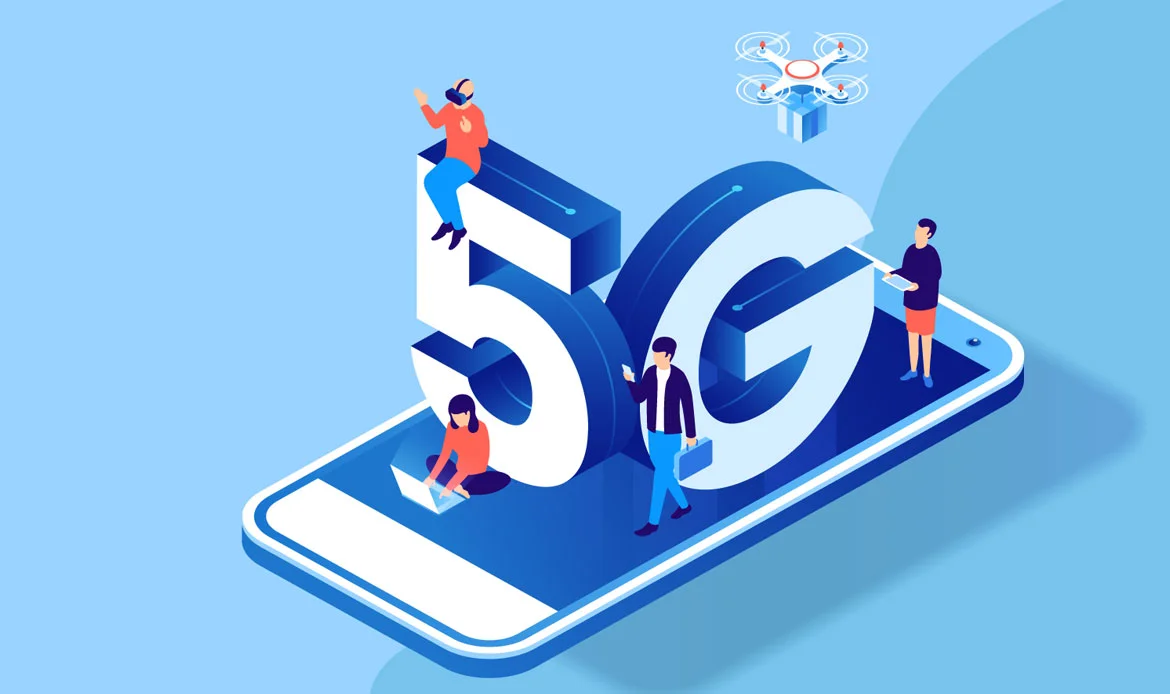 It refers to how the widespread adoption of 5G networks is influencing the field of User Experience (UX) design:
It refers to how the widespread adoption of 5G networks is influencing the field of User Experience (UX) design:
5G Networks:
5G is the latest generation of wireless technology, offering much faster and more reliable internet connections than previous generations like 4G. Its global deployment is changing how people access and interact with digital content.Bandwidth-Intensive Experiences:
With 5G, designers can create digital experiences that were once limited by slower internet connections. This includes high-definition video streaming, immersive augmented reality apps, and real-time collaboration tools.Seamless and Responsive Interfaces:
UX designers need to adapt to 5G’s capabilities by designing interfaces that fully utilize the increased speed and reliability. This involves creating experiences that load quickly, provide smooth interactions, and deliver higher-quality content. In summary, 5G is transforming UX design by enabling bandwidth-intensive and real-time digital experiences. Designers must harness 5G’s potential to deliver enhanced and more engaging interfaces that take advantage of the speed and reliability of these networks.7. Inclusive Design: Accessibility and UX Trends
Inclusivity:
Inclusive design means making digital interfaces and experiences accessible to all users, including those with disabilities. It’s a commitment to ensuring that technology is usable by everyone, regardless of their abilities.Accessibility:
Accessibility is a crucial component of inclusivity. It involves designing interfaces that can be easily used by individuals with disabilities like visual impairments, hearing impairments, or motor impairments. This includes accommodating assistive technologies such as screen readers and voice commands.Benefits for Everyone:
Inclusive design isn’t just about aiding users with disabilities; it improves the overall user experience for everyone. For instance, a website with clear and concise content benefits all users, not just those with visual impairments. Similarly, features like voice commands can enhance the experience for a broad audience. In summary, Inclusive Design in UX recognizes the diversity of users and aims to create digital experiences that are accessible and user-friendly for everyone, regardless of their abilities or disabilities. It represents a shift toward more equitable and thoughtful design practices.8. The Future of E-Commerce UX
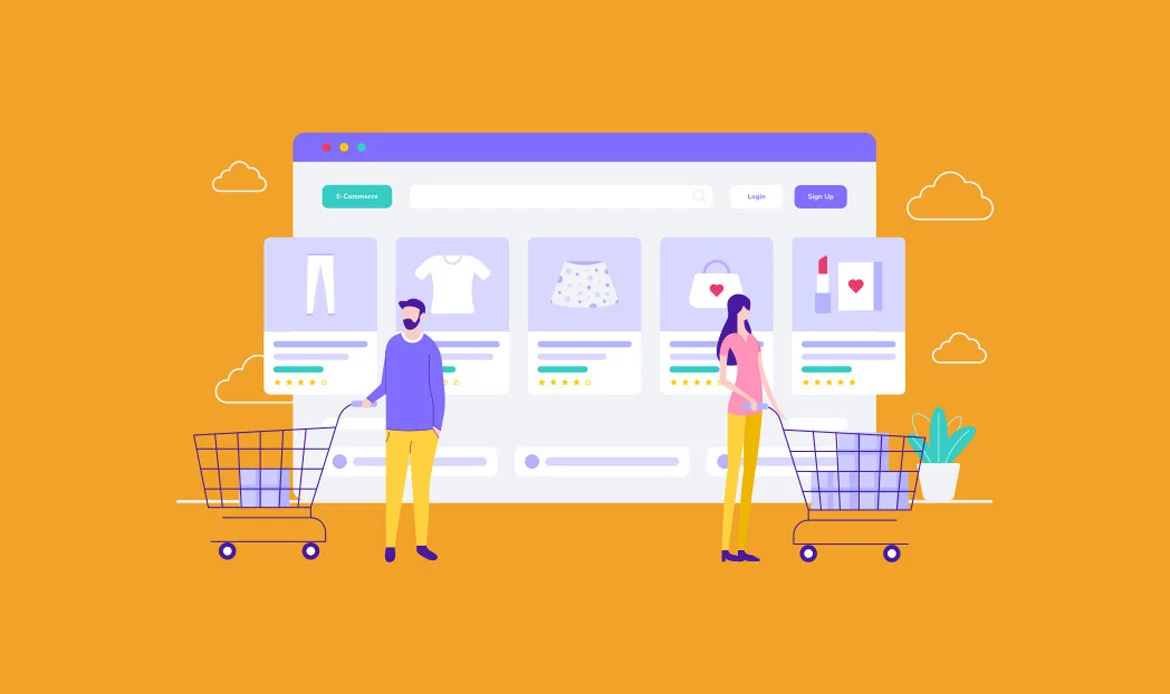
Enhancing User Journey:
E-commerce platforms will focus on improving the overall user experience. This means making the process of finding, selecting, and purchasing products as smooth as possible.Augmented Reality Product Previews:
Augmented reality will be used to allow customers to preview products virtually. For example, you can see how furniture would look in your home before buying it.One-Click Purchases:
Simplified checkout processes, like one-click purchases, will become more common, reducing friction and making shopping quicker.Personalized Shopping Assistants:
AI-driven shopping assistants will provide personalized product recommendations and assistance, enhancing the shopping experience.Secure and Convenient Payments:
Trustworthy and convenient payment methods will be essential for building user trust and ensuring smooth transactions. In essence, the future of e-commerce UX will involve advanced technologies, streamlined processes, and personalization to make online shopping more convenient and enjoyable for users.9. Dark Mode and Beyond: Visual Trends in UX Design
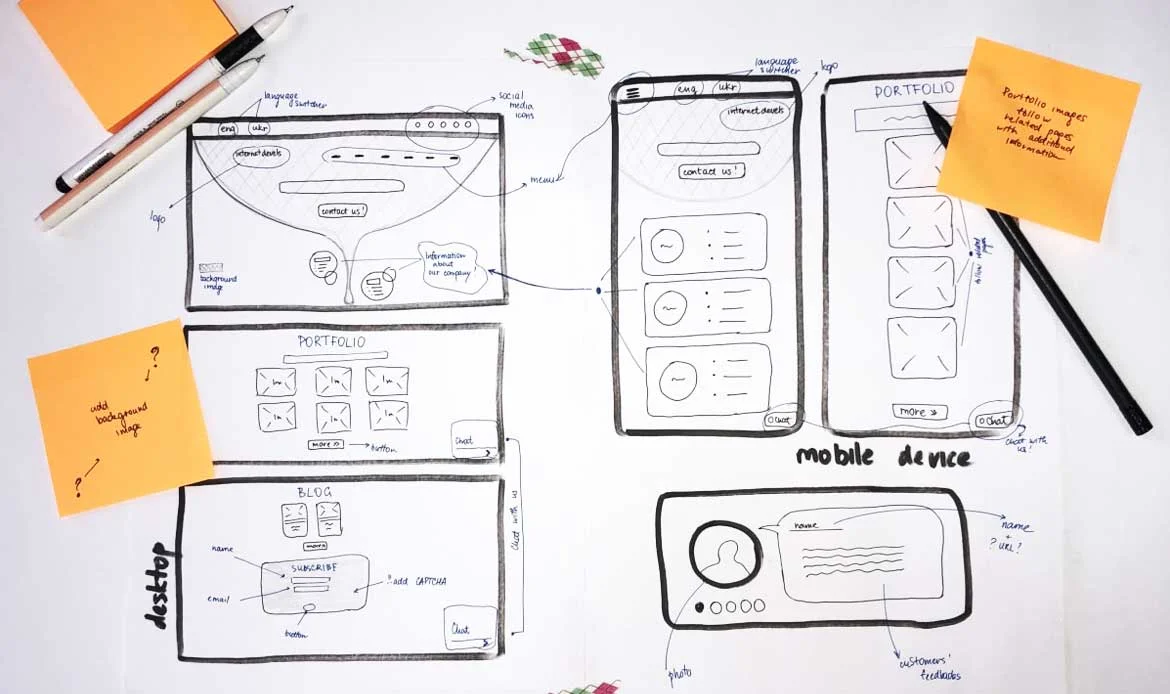 Dark mode has gained popularity for its reduced screen glare and energy-saving benefits. However, designers will explore new visual trends beyond dark mode. High-contrast interfaces, bold typography, and unique color schemes will help brands stand out and create memorable user experiences.
Dark mode has gained popularity for its reduced screen glare and energy-saving benefits. However, designers will explore new visual trends beyond dark mode. High-contrast interfaces, bold typography, and unique color schemes will help brands stand out and create memorable user experiences.
Dark Mode:
Dark mode reduces screen glare and saves energy, making it popular. But designers are looking beyond this trend.High-Contrast Interfaces:
UX design will feature high-contrast interfaces that make content stand out, improving readability and user engagement.Bold Typography:
Expect bold typography choices to create visual impact and convey brand personality effectively.Unique Color Schemes:
Designers will experiment with distinctive color schemes that help brands differentiate themselves and leave a lasting impression. The future of UX design involves exploring new visual trends, moving beyond dark mode, and focusing on high contrast, typography, and unique colors to create memorable user experiences.10. Biometric Authentication and UX
 Biometric authentication methods, such as fingerprint recognition and facial scanning, will become standard in UX design. These methods offer secure and convenient access to digital platforms, reducing the reliance on traditional passwords. Designers will need to ensure a seamless and user-friendly biometric authentication experience.
Biometric authentication methods, such as fingerprint recognition and facial scanning, will become standard in UX design. These methods offer secure and convenient access to digital platforms, reducing the reliance on traditional passwords. Designers will need to ensure a seamless and user-friendly biometric authentication experience.
Biometric Authentication:
These methods offer secure and convenient access to digital platforms, replacing traditional passwords.Seamless User Experience:
Designers will need to ensure that the process of using biometric authentication is seamless and user-friendly, enhancing security while maintaining ease of use. In essence, biometric authentication will become a standard feature in UX design, improving both security and user convenience. Designers will play a crucial role in making this technology accessible and user-friendly.11. Design for Wearables
As wearable technology advances, UX designers will create interfaces optimized for smartwatches, fitness trackers, and other wearables, focusing on simplicity and quick interactions.Optimization for Wearables:
UX designers will craft interfaces specifically designed for the limited screen real estate and unique interactions of wearable devices.Simplicity and Quick Interactions:
Wearable UX design prioritizes simplicity and quick interactions since users often interact with wearables on the go and in short bursts. In essence, designing for wearables is about ensuring that the user experience on these compact devices is intuitive, efficient, and well-suited to the context in which wearables are typically used.12. Emotional Design
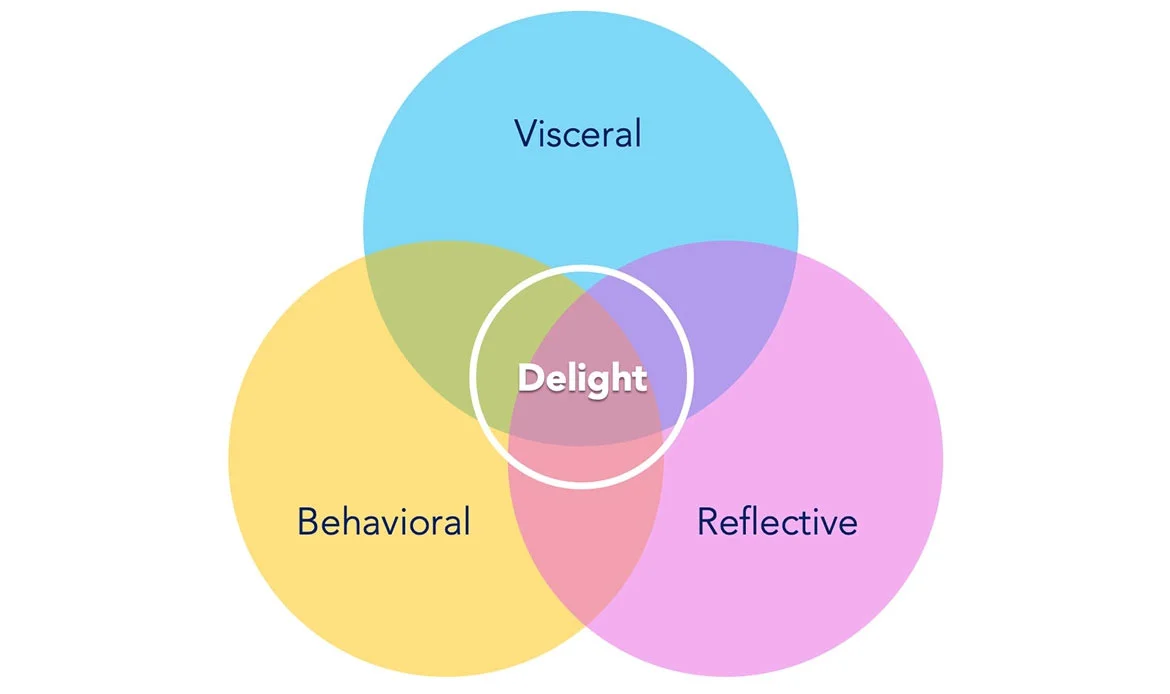 Emotional design will take center stage, with UX designers crafting experiences that evoke specific emotions and connect with users on a deeper level.
Emotional design will take center stage, with UX designers crafting experiences that evoke specific emotions and connect with users on a deeper level.
Center Stage:
In the future of UX design, emotional design will be a primary focus.Crafting Experiences:
Designers will work to craft interfaces and interactions that intentionally trigger emotions in users. For example, a website might aim to evoke feelings of trust, excitement, or nostalgia.Deeper Connections:
By tapping into users’ emotions, designers can establish stronger and more meaningful connections, making the user experience more engaging and memorable. In summary, emotional design is about going beyond functional usability and aiming to create experiences that resonate with users on an emotional level, leaving a lasting impression.13. Haptic Feedback
Haptic feedback will enhance user interactions by providing tactile responses, making touchscreens and virtual buttons feel more physical and responsive.Tactile Responses:
Haptic feedback adds physical sensations to digital interactions, making it feel like you’re touching or interacting with physical objects when using touchscreens or virtual buttons.Enhanced Realism:
This technology aims to make digital experiences more realistic and responsive by simulating physical sensations, such as vibrations or resistance, when you touch or interact with elements on a screen.14. Cross-Platform Consistency
Designers will prioritize cross-platform consistency, ensuring that users have a seamless experience across different devices and screen sizes.Seamless Experience:
Designers aim to create a unified experience, regardless of whether users access the product on a desktop computer, tablet, smartphone, or other devices.Uniformity:
This involves maintaining consistent design elements, layout, functionality, and content presentation across different platforms and screen sizes.User Convenience:
Cross-platform consistency ensures that users can easily transition between devices without encountering significant changes in how they interact with the product. It enhances user convenience and reduces confusion. In summary, prioritizing cross-platform consistency in UX design is about delivering a seamless and user-friendly experience that remains uniform and cohesive, regardless of the device or screen size users choose to use.15. 3D Graphics and Interactions
The use of 3D graphics and interactions will grow, offering users more engaging and immersive digital experiences.3D Graphics:
This refers to the integration of three-dimensional visuals and objects into the user interface, making elements appear to have depth and volume. These elements can include 3D models, animations, and spatial designs.Immersive Experiences:
The use of 3D graphics and interactions aims to immerse users in the digital environment, making the interface more visually appealing and interactive.Engagement:
3D elements can enhance user engagement by providing a more realistic and interactive experience, especially in fields like gaming, e-commerce, and virtual reality applications. The adoption of 3D graphics and interactions in UX design is driven by the desire to offer users more captivating and immersive digital experiences that go beyond the traditional two-dimensional interfaces.16. Data Privacy and Ethics
Ethical design practices will gain importance, with designers taking a stand on data privacy and responsible use of technology. Ethical Design Practices: Designers will prioritize creating digital experiences that respect user privacy and adhere to ethical principles. This includes being transparent about data collection and usage. Data Privacy: Protecting user data and ensuring it is not mishandled or exploited is a key concern. Designers will take steps to safeguard user information and uphold privacy standards. Responsible Technology Use: Designers will play a role in advocating for the responsible and ethical use of technology. They may take a stand against practices that compromise user privacy or promote harmful behavior. The trend of “Data Privacy and Ethics” reflects a commitment to responsible and ethical design practices that prioritize user privacy, transparency, and the well-being of users in the digital landscape.17. Adaptive Content
Content will become more adaptive, with UX designers creating flexible layouts and content structures that cater to various devices and user preferences. Flexible Layouts: Designers craft content layouts that can dynamically change based on the screen size and orientation of the device being used. This ensures that content remains readable and visually appealing on various screens, from desktops to smartphones. Content Structures: Adaptive content structures allow for different versions of content to be presented based on user preferences or device capabilities. For example, users might see shorter or more concise content on a small mobile screen compared to a desktop. Enhanced User Experience: Adaptive content ensures that users receive an optimal viewing experience, regardless of the device they are using or their preferences for viewing content. It enhances usability and readability. Adaptive content is about making sure that the presentation of digital content is flexible enough to cater to the diverse array of devices and user preferences encountered in the digital landscape.18. Gamification
Gamification elements will be incorporated into UX design to boost user engagement and motivation. Game Elements: UX designers incorporate elements like points, badges, leaderboards, challenges, and rewards commonly associated with games into websites, apps, or other digital interfaces. Engagement: Gamification aims to make the user experience more engaging and interactive. Users are encouraged to participate, complete tasks, and achieve goals, much like in a game. Motivation: By introducing game-like features, designers motivate users to take desired actions, explore content, or stay engaged with the platform. This can be particularly useful in educational apps, fitness apps, or loyalty programs. In summary, gamification leverages elements from games to create more engaging and motivating user experiences, ultimately increasing user participation and satisfaction.19. Motion Design
Motion design will play a significant role in UX, guiding users through interfaces with fluid animations and transitions. Fluid Animations: Designers incorporate smooth and purposeful animations to provide visual feedback, direct attention, and create a more seamless and enjoyable interaction with the interface. Transitions: Motion design includes transitions between different interface states or screens. These transitions are often used to maintain a sense of continuity and to help users understand the relationships between elements. Enhanced User Guidance: Motion design serves as a visual guide, helping users navigate through complex interfaces or providing feedback about their interactions. It can make the user experience more intuitive and user-friendly. Motion design is about using animations and transitions strategically to improve user guidance and interaction within digital interfaces, making the experience more engaging and user-centric.20. Continuous Learning and Adaptation
UX designers will embrace a culture of continuous learning and adaptation, staying updated on emerging technologies and evolving user behaviors to remain at the forefront of design innovation. Lifelong Learning: UX designers commit to continuously expanding their knowledge and skill set by staying updated on the latest design trends, tools, and technologies. User-Centric Focus: Designers actively study and understand evolving user behaviors, preferences, and needs to ensure that their designs are always aligned with user expectations. Innovation: By keeping pace with advancements in technology and design, designers can innovate and introduce fresh, user-centered ideas into their projects. Continuous learning and adaptation in UX design are about embracing change and growth, both in terms of design skills and understanding user dynamics, to stay at the forefront of design innovation and provide users with the best possible experiences.Frequently Asked Questions About Emerging UX Design Trends for 2025
What UX design trends are expected to dominate in 2025?
Key trends include AI-driven personalization, immersive experiences, micro-interactions, voice-enabled interfaces, and accessibility-focused designs. These trends focus on enhancing user engagement, satisfaction, and overall digital experience.
How can businesses implement these UX trends effectively?
Businesses can implement these trends by analyzing user behavior, incorporating AI tools, optimizing for mobile and voice interactions, improving accessibility, and testing design changes in real-world scenarios to ensure a seamless user experience.
Why is it important to follow UX design trends for the future?
Following UX trends helps businesses stay competitive, improve user engagement, and meet evolving expectations. Adopting emerging design practices ensures websites and apps remain intuitive, visually appealing, and aligned with the latest digital standards.
The Bottom Line
In closing, the future of user experience design is filled with limitless possibilities. The trends we’ve explored in this blog represent just the tip of the iceberg in the ever-evolving UX landscape. As we move into 2025 and beyond, the importance of user-centric design will only grow, shaping how we interact with technology, products, and services.
Embrace these trends as opportunities to create more engaging, accessible, and meaningful user experiences. Stay curious, stay adaptable, and continue to push the boundaries of design innovation.
Stay Ahead with the Hottest UX Design Trends of 2025
adopt these cutting-edge UX design trends with the right WordPress themes to captivate your audience, improve usability, and grow your online presence!

